Architects are designing the airports of the future as the coronavirus pandemic forces new thinking on how we travel - take a look
Thomas Pallini

- The coronavirus pandemic is encouraging architects to imagine the airports of the future as the downturn is opening new opportunities for the industry.
- Fentress Architects held a contest among university students to design next-generation airports while Gensler designed an open-concept alternative to the iconic Washington Dulles International Airport terminal.
- Individuality is a key tenet with private pods and high-speed transportation modes shuttling passengers to and from airports while simultaneously performing security checks.
The coronavirus pandemic has presented the aviation industry with an unprecedented opportunity to reimagine how travelers take to the skies, starting with the airport experience.
A large reduction in daily passenger numbers has given airports an abundance of time and space to implement new temporary safety features, but the fact remains that airports weren't built to handle a pandemic.
Architecture firms Gensler and Fentress Architects are using the downturn in travel to envision what future airports may look like. Gensler recently took up a challenge by Washington Magazine to redesign local public areas while Fentress Architects turned to university students to design the airports of 2100 as part of this year's Fentress Global Challenge.
Airport planning is already shifting towards built-in resilience to global health crises, even if it's too late to mitigate the effects of COVID-19, and airports of the future will need to address the possibility of another pandemic. New York's LaGuardia Airport and Salt Lake City International Airport both opened new terminals during the pandemic that came complete with plexiglass partitions, hundreds of hand sanitizer stations, and social distancing reminders.
Take a look at what the future of airports might entail as transportation hubs cope with new safety demands from the public in a pandemic-stricken world.
Some current-day airports are finding themselves without enough space to effectively handle social distancing concerns as passenger numbers slowly rebound to 2019 levels, potentially leading to unsafe conditions where passengers are within six feet of each other.

Only temporary solutions have been put into place to mitigate concerns of spreading the virus inside an airport terminal, chief among them face covering requirements, which is far from mandatory in every US airport. Plus, enforcement is often difficult with exceptions for eating and drinking.
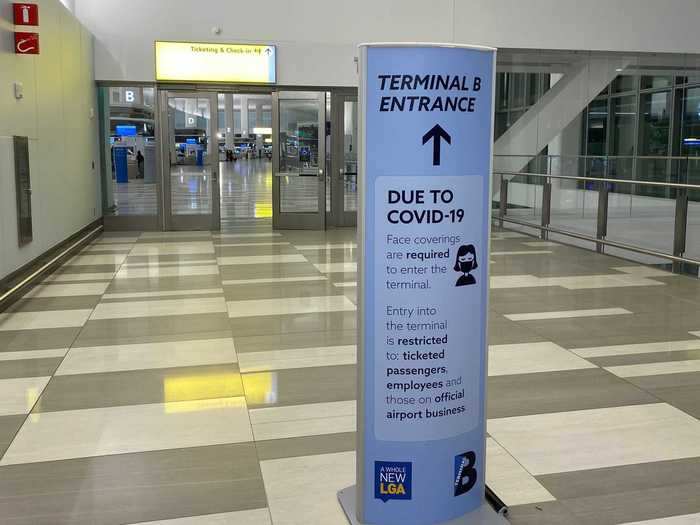
Other solutions include plexiglass partitions separating airport employees from passengers...
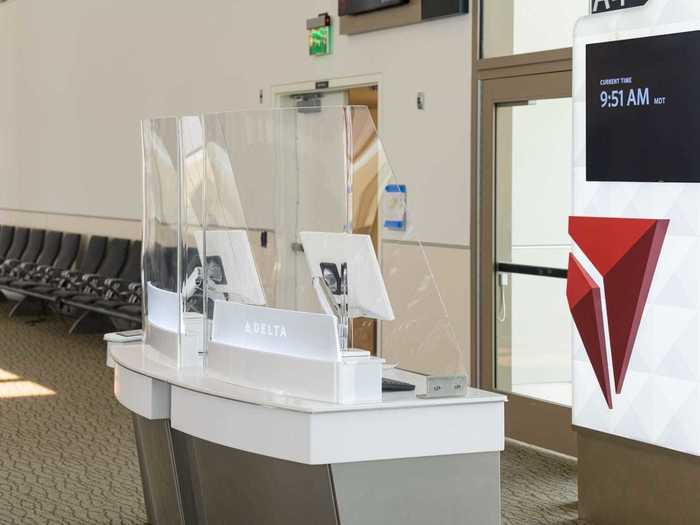
Hand sanitizer and wipe stations...
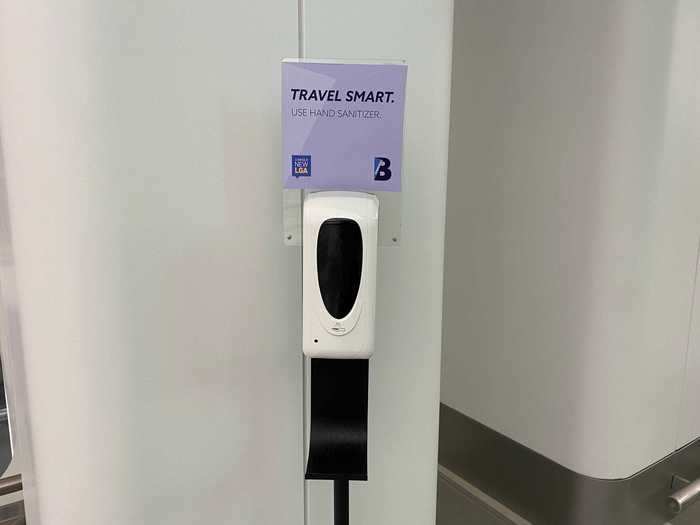
And UV cleaners for frequently touched surfaces.
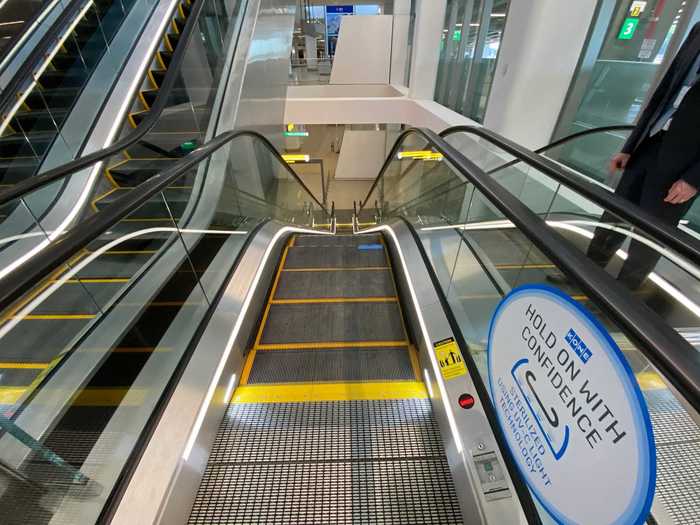
Most airports aren't prepared in the long-term for extended pandemics. That's why architects are examining how to design airports differently, and redesign existing structures.
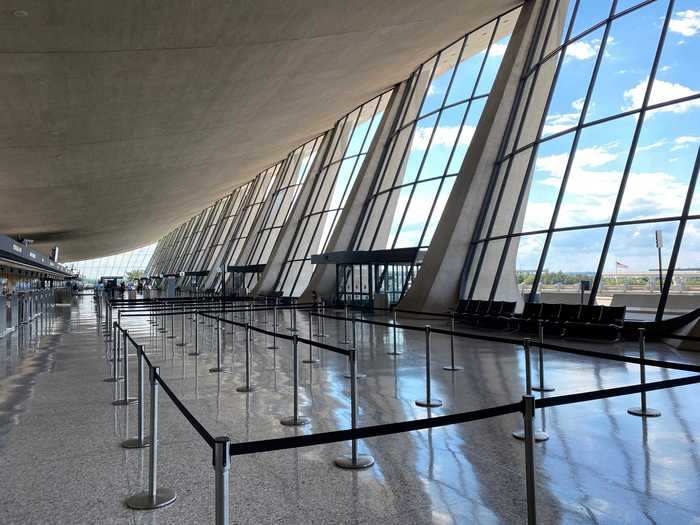
Architecture firm Gensler recently took a look at Washington Dulles International Airport to see how its iconic terminal could be repurposed in the post-COVID-19 era.
The design included a new headhouse to handle departing passengers and converting the iconic Eero Saarinen-designed building into a lounge and retail area in which passengers can wait for their flight.
The removal of airline ticket counters would create bounds of open space, alleviating social distancing concerns while maintaining the 1960s-era terminal.
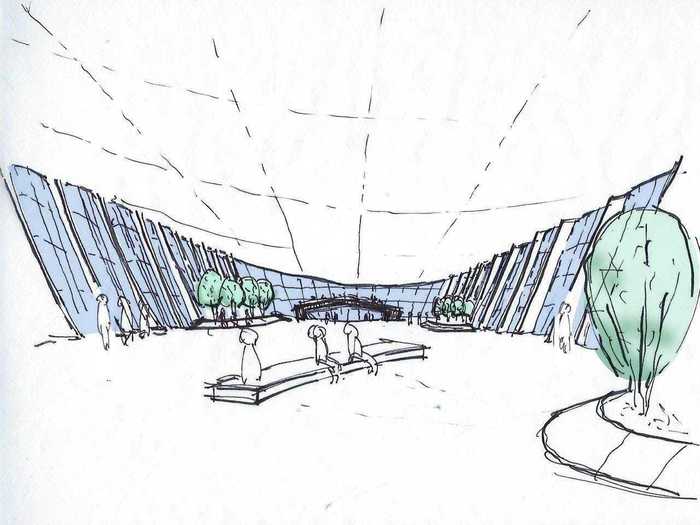
Aircraft gates would then be located in satellite terminals away from the main building and passengers would be transported there via individual autonomous vehicles, inside of which security inspection and border controls would also take place.
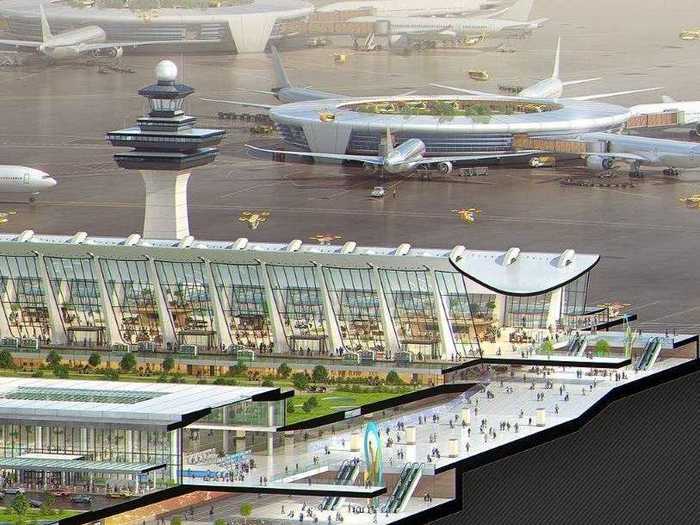
Letting people move about as individuals plays a large role in these designs for obvious social distancing concerns.
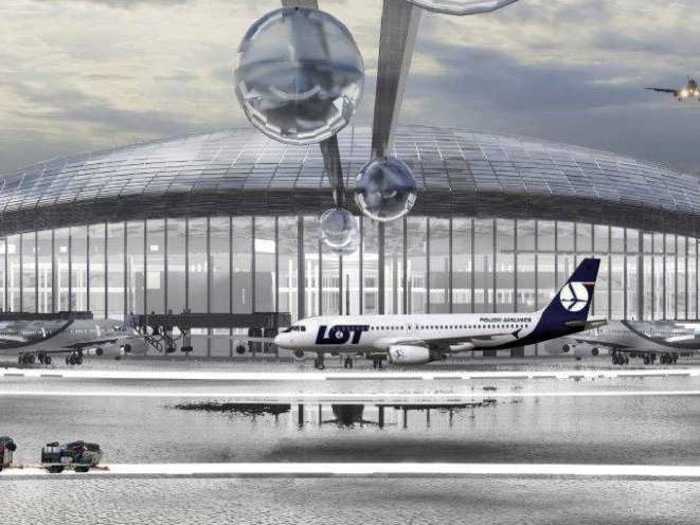
Lining up in queues for airport trains or shuttles would be replaced by pods carrying individuals or single families.
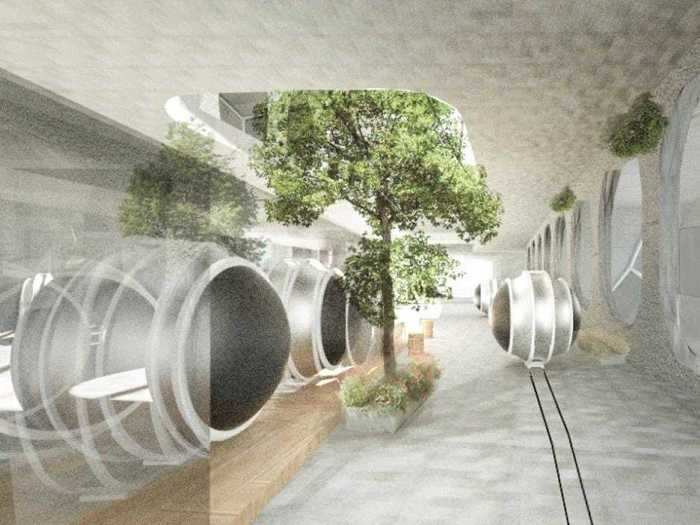
New public transportation technology, including hyperloops, would ensure individuals could be transported at the same speeds as groups without incurring delays.
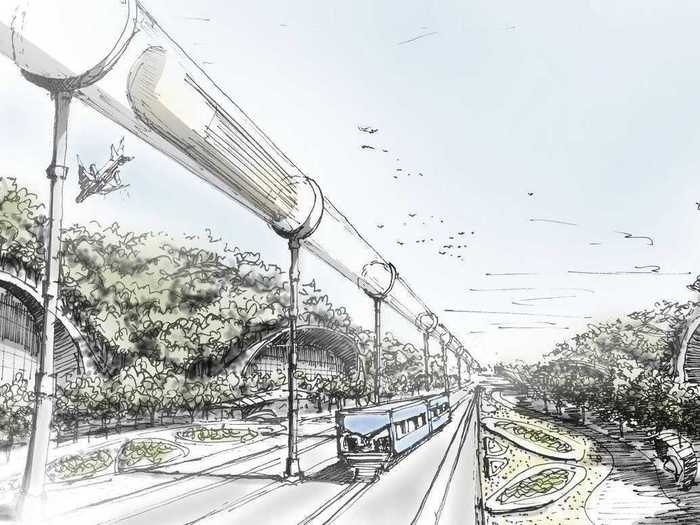
Hyperloop has been pitched as a way to connect London's Gatwick and Heathrow airports, allowing for transfers between the two in minutes, easing congestion at both airports and giving travelers the option to easily use both without having to travel further to one or the other.
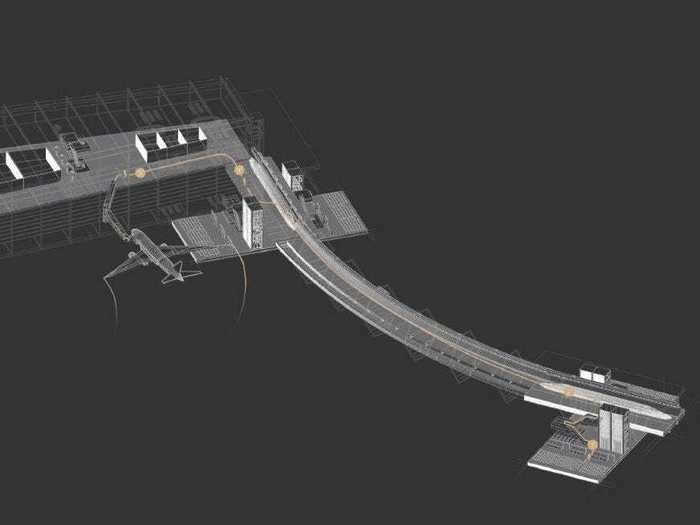
Source: The Independent
A design for a new Amsterdam Airport Schiphol calls for expanded canal access for travelers to arrive by boat, similar to Venice's Marco Polo Airport.
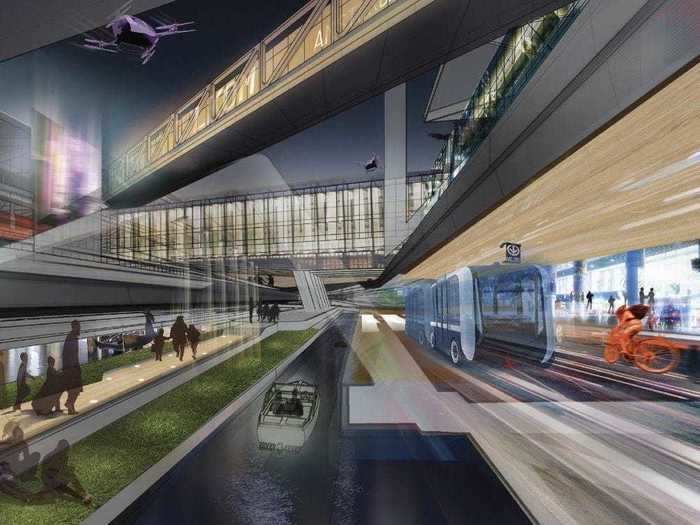
Another popular Dutch activity, cycling, would also be accommodated.
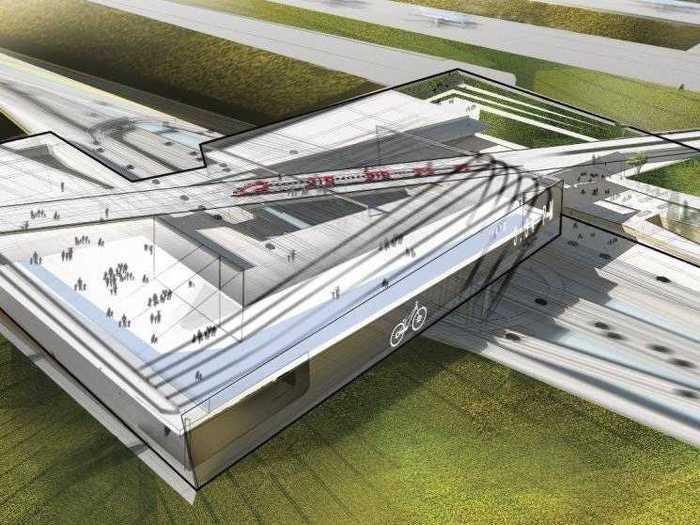
Designs for the new airport, dubbed "Schiphol International Airport," would better segregate arriving and departing passengers to ease congestion.
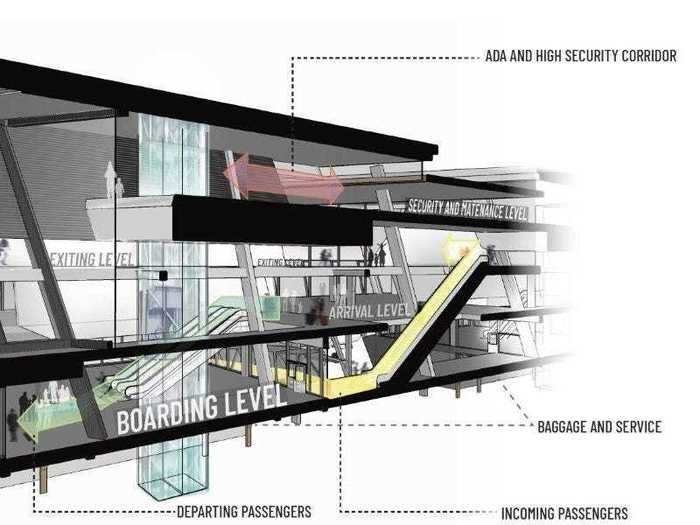
Airports are also being designed to be flexible to the changing landscape of aviation, especially as new designs seek to upend the traditional notion of airplanes.
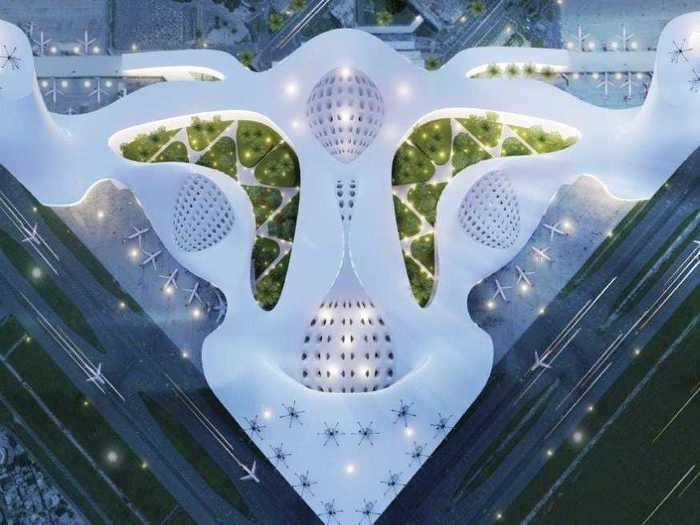
While mile-long runways are required for most aircraft today, they might be obsolete in the near-future as vertical take-off and land aircraft become more widespread.
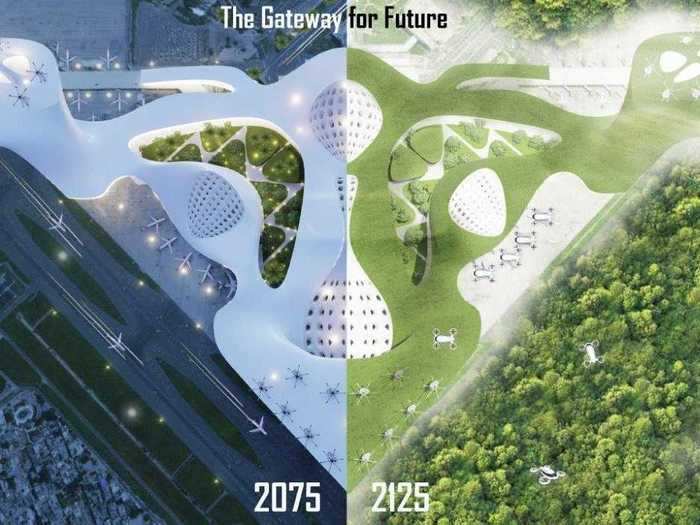
Building vertically is also a popular design, with many space-constrained urban airports finding themselves unable to expand laterally.
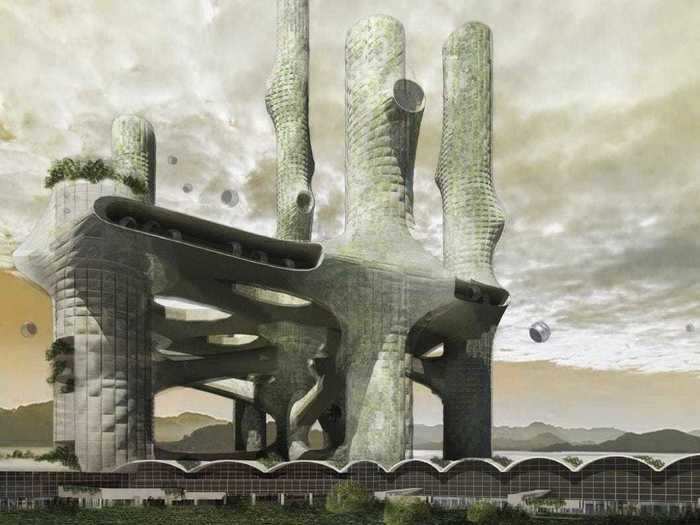
Designers of the new Terminal B at LaGuardia had no choice but to go vertical, as the airport's small perimeter limited design possibilities.
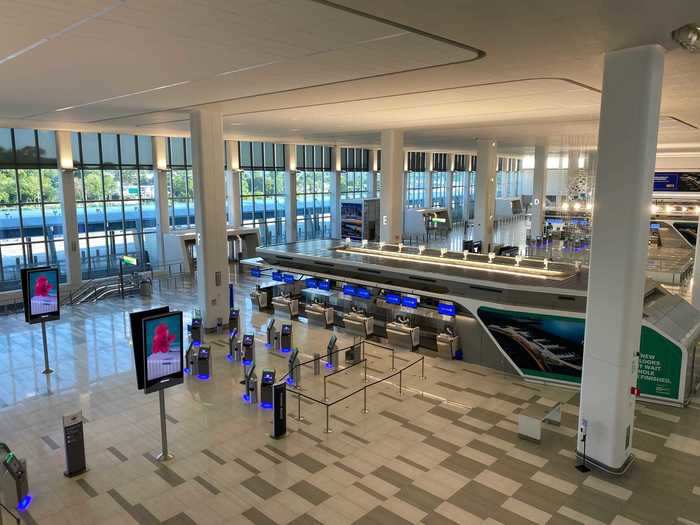
Departing passengers arrive on the third level and ascend to the top floor after going through security, where eateries and retail shops are located, before crossing one of two sky bridges that connect to the concourses.
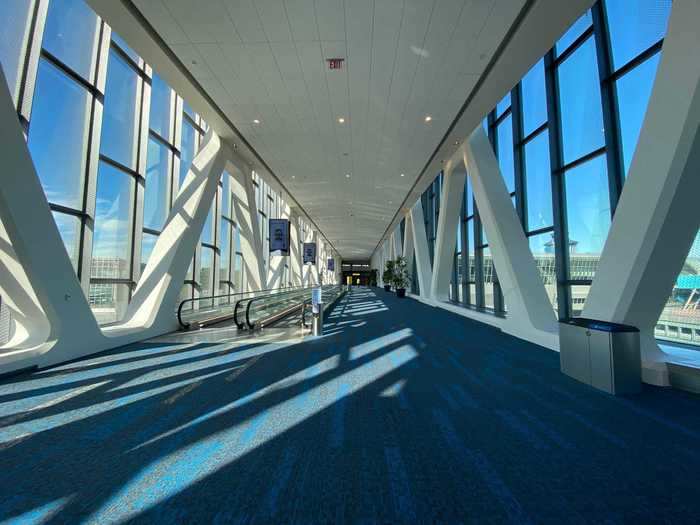
Building up also allows airports to be located directly in the heart of some cities, including Shanghai, as this design from the University of Toronto proposes.
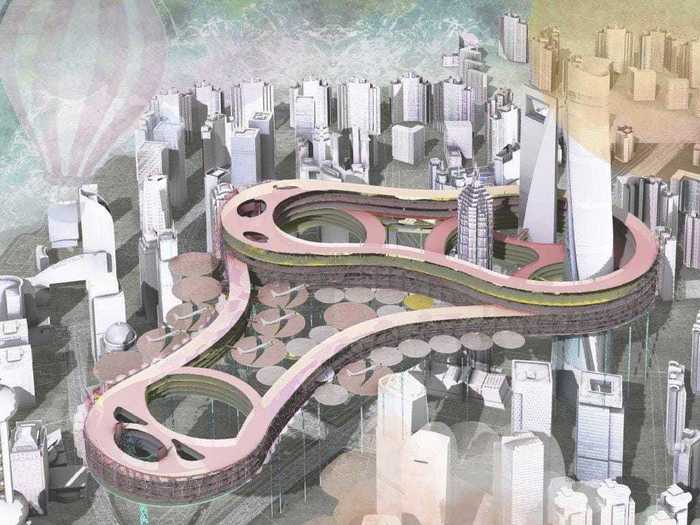
The relationship between airports and their surroundings is also changing and the idea of a sustainable airport would be to have an airfield coexist with nature, instead of destroying it with harmful construction.
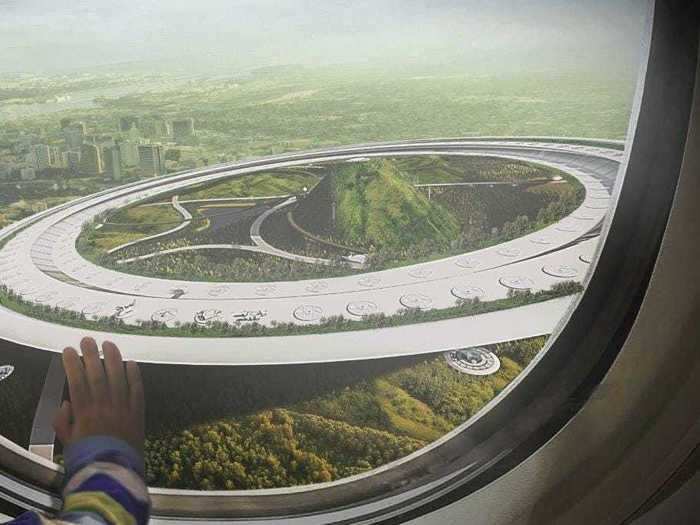
This design for an airport to replace Chicago's O'Hare International Airport seeks to replace the sprawling, ever-growing airport with a circular "vertiport."

This design for a new LAX brings the idea of an airport back to its roots, with the iconic Southern California gateway situated in the middle of a seaport.
Airports may not even need to be on land: Some designs call for floating structures, including this design for a single-runway modular airport.
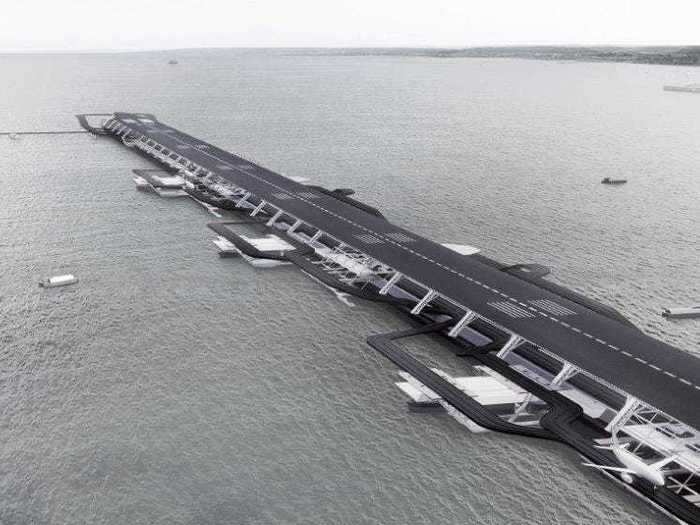
Floating airports, as proposed by this alternative to Singapore Changi Airport, replace the need for environmentally harmful land reclamation.
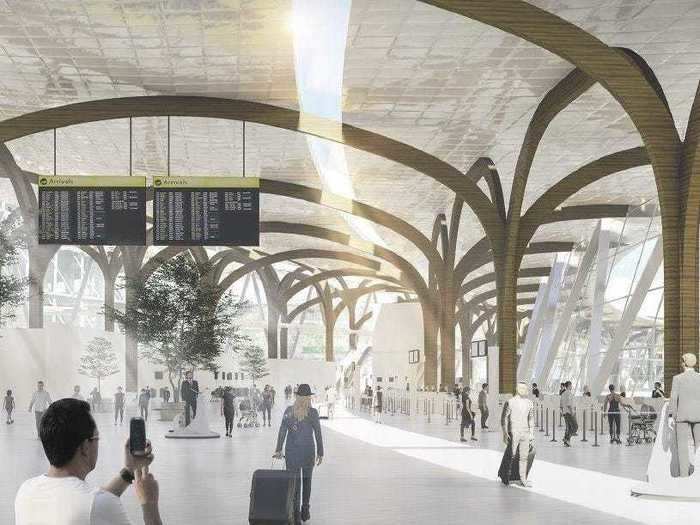
Planes would be stored under the terminal, and utilize numerous perpendicular runways below.
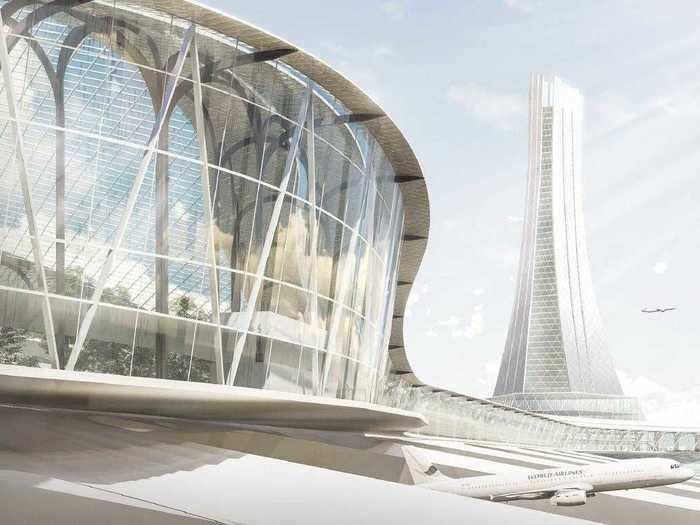
A design for Hong Kong International Airport calls for a "floating aero city."
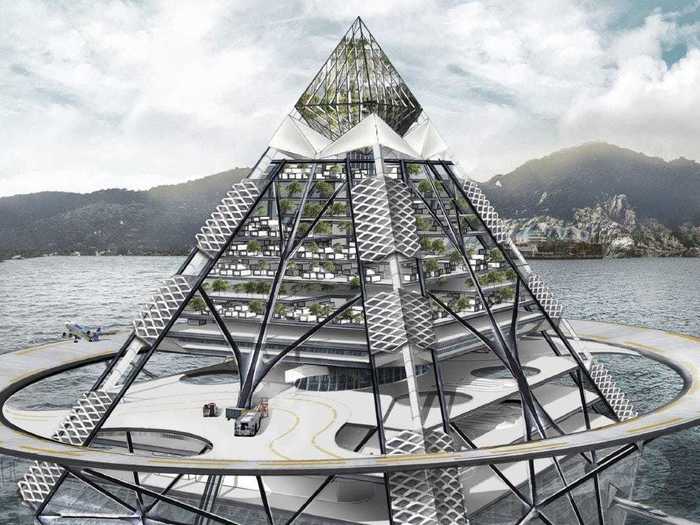
Tidal energy from waterways in the Pearl River Delta would be used to power the sustainable airport, which utilizes circular runways.

And as aviation turns to zero-emission solutions, airports are also being designed as greenhouses.
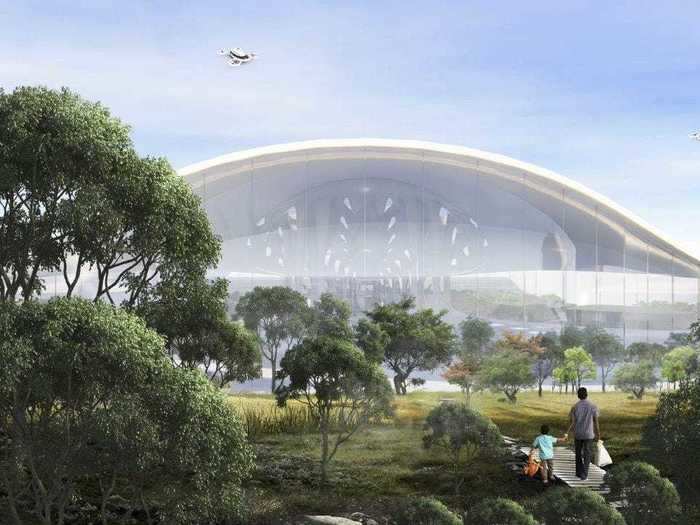
The relationship with nature is more pronounced at airports in regions that struggle with their carbon footprint, including this design for an overgrown Indira Gandhi International Airport in India.
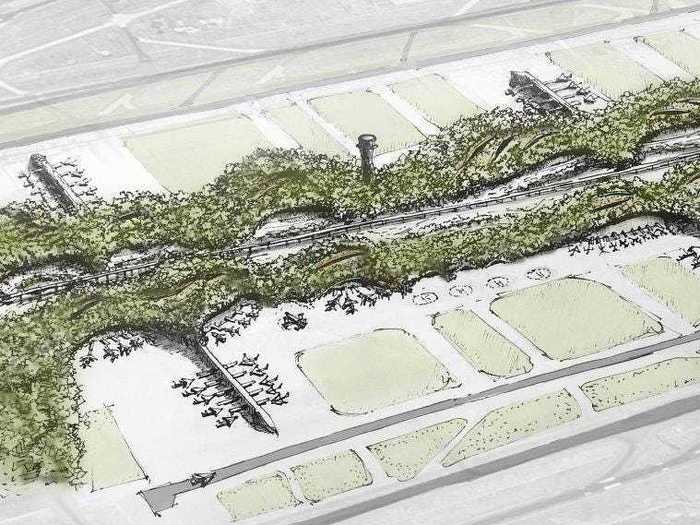
It's a similar look to the Jewel at Singapore Changi Airport, home to the largest indoor water fountain in an airport.
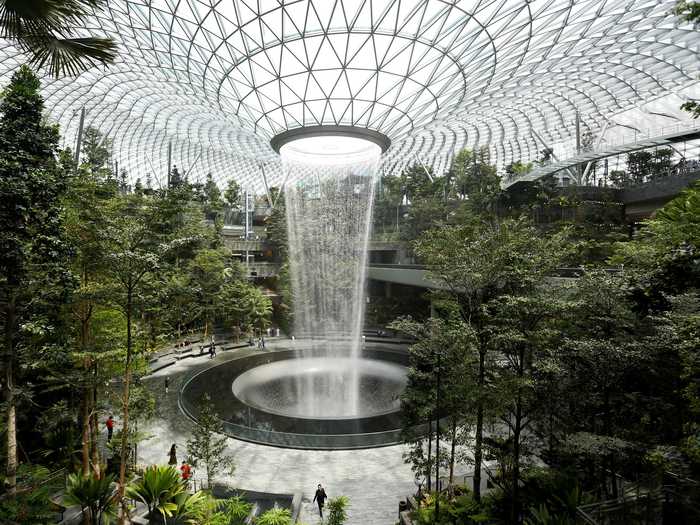
Most of these airport designs rely on advances in aviation in order to fulfill their promises.
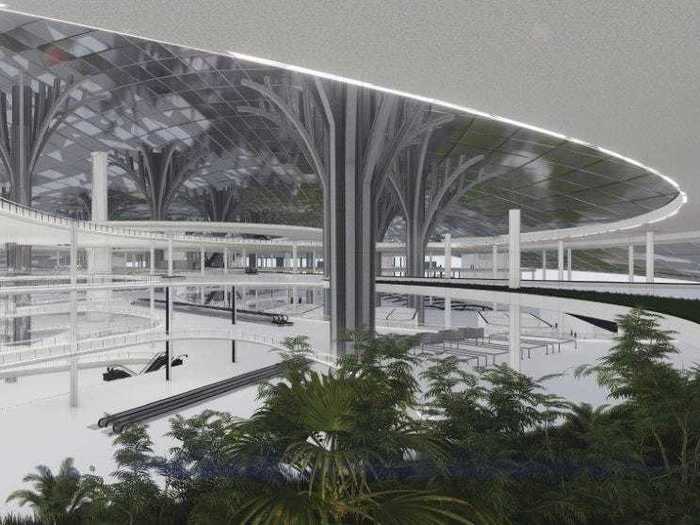
Modern-day aircraft require an excess of space to maneuver and can't easily land on complicated indoor or circular runways that require precision flying.
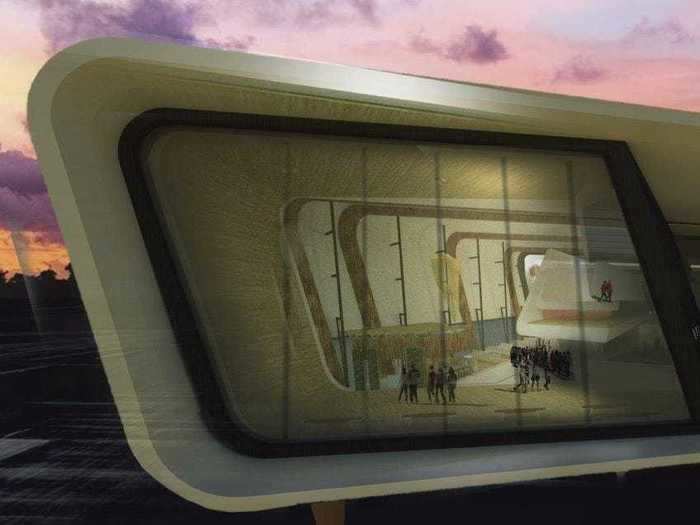
Airports can, however, use these examples as a baseline to incorporate more sustainable ideas into their construction while also considering the fact that pandemics are unavoidable, and can badly disrupt any industry.
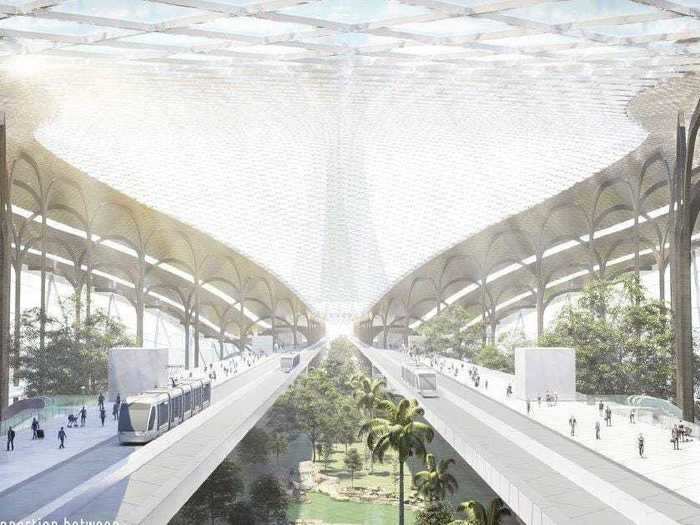
Ty Osbaugh, director of aviation and transportation projects at Gensler, told Business Insider that the mistake for airports would be to wait years to implement meaningful changes. The right time to invest in new infrastructure is now, he said, while passenger numbers are down and inconvenience is minimized.
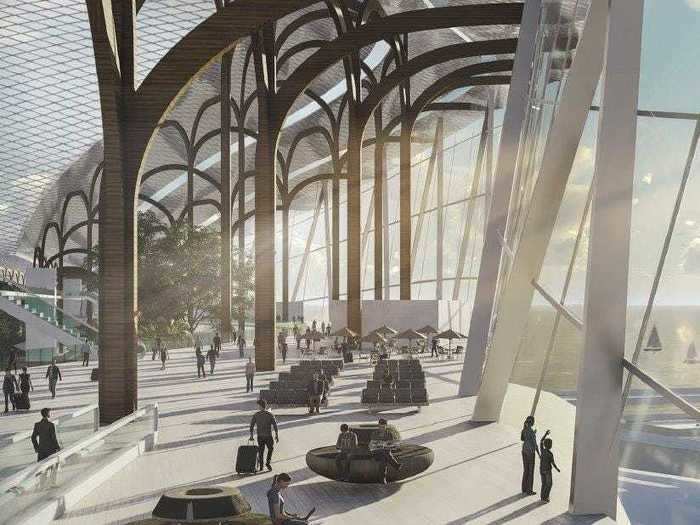
Overseas airports will likely lead, having an abundance of space to build airports, but the trend will soon follow in the US, according to Osbaugh.
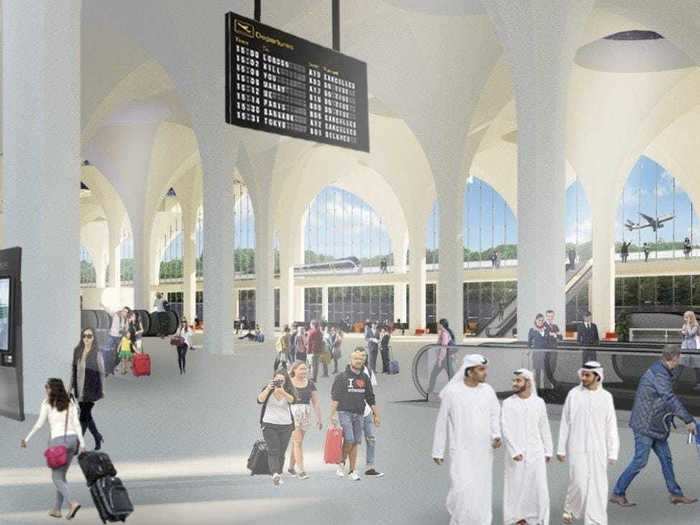
The world is anxious to return to the skies, but travelers want to know that they're being protected when flying. Until they feel safe, passenger numbers on commercial flights will likely stay depressed.
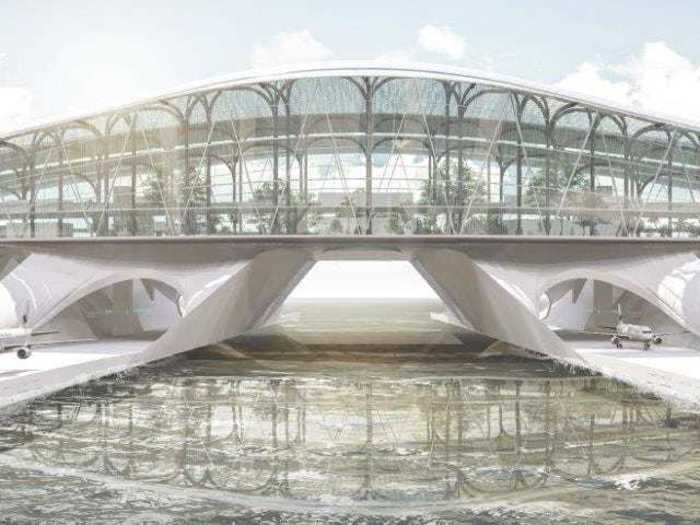
The airport of the future doesn't have to wait for flying cars and autonomous VTOL aircraft to be built. It just requires creativity, investment, and dedication.
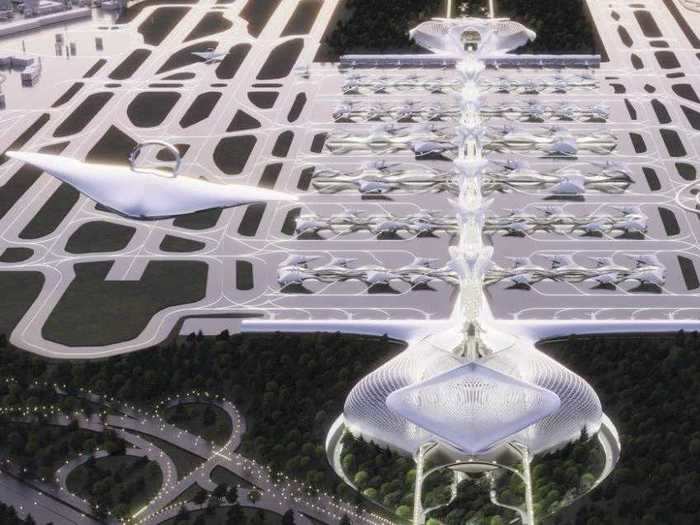
READ MORE ARTICLES ON
Popular Right Now
Popular Keywords
Advertisement